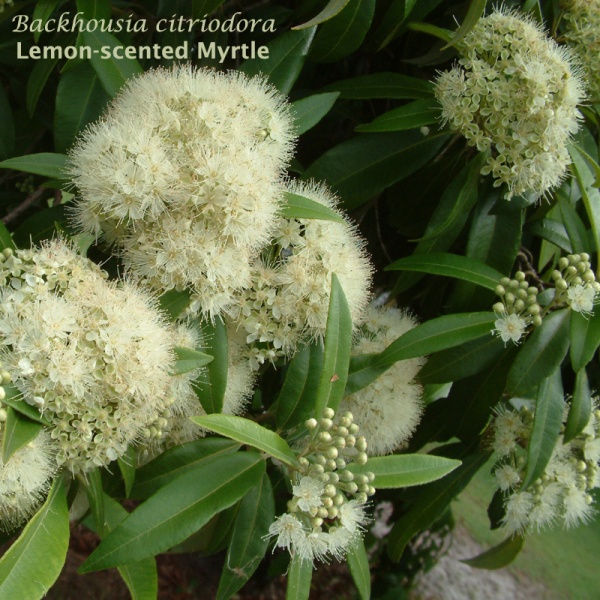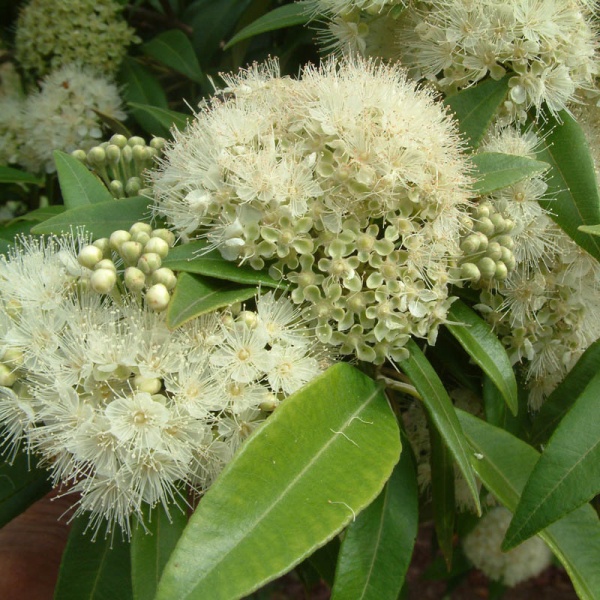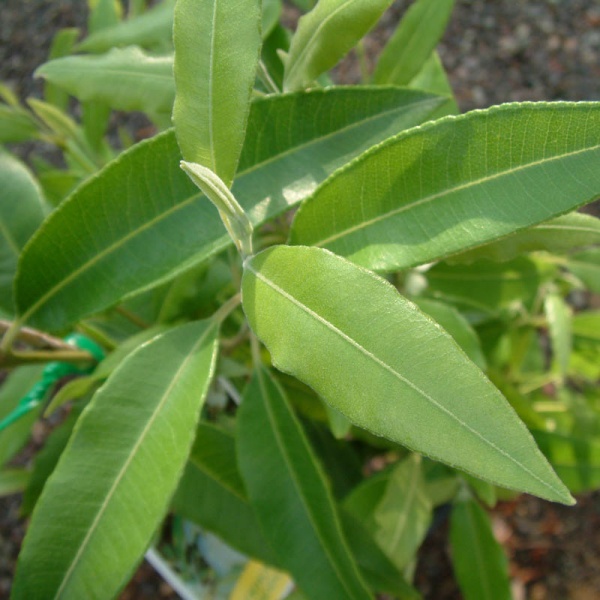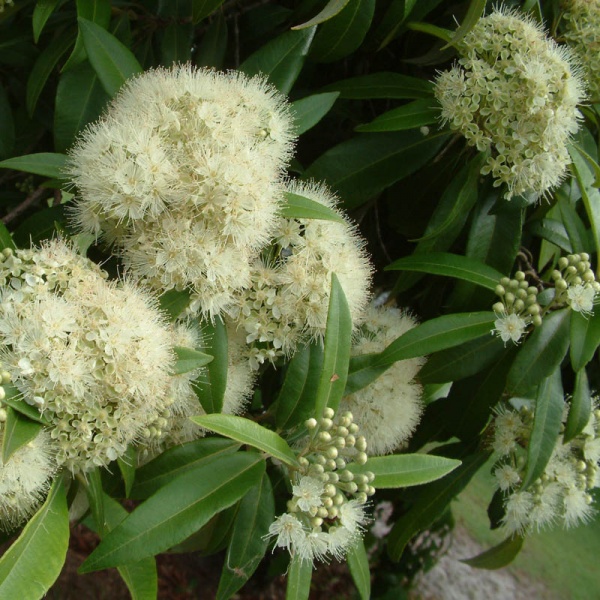Scientific Name: Backhousia citriodora
-
Pronunciation:back HOW zee a sit Dree oh DOOR ah
-
Common Name:Lemon scented Myrtle, Lemon Ironwood, Lemon Myrtle





-
Derivation:Backhousia: honours James Backhous who was an early Quaker missionary among convicts and keen botanical collector. citriodora: L. cirton - lemon, odorus - smell.
-
Type:
-
Family:MYRTACEAE
-
Flowers:White, December to March
-
Fruit:Brownish dry capsule with five persistent sepals
-
Vegetation Type:Sub-tropical and littoral rainforests and riverine scrub
-
Species List:Hedges, Bush food, Community Gardens, Noosa High School, Fraser Island, Upper Yandina Creek, NNP Tanglewood, Kin Kin Arboretum, Heritage Park,
Cultural Notes
TAKE CARE! Some information about bush foods and medicines may be anecdotal. Correct identification and preparation is essential:
Popular bush food. Lemon myrtle leaves are often used to flavour poultry or sea-food: Just one or two leaves give a special touch to baked chicken. Furthermore, lemon myrtle is popular for herbed vinegar, mayonnaise and vinaigrettes. The wonderful tangy aroma of Lemon myrtle is used in Australian bush cuisine, perfumery and aromatherapy applications. Reminiscent of lemon and of the true Melissa oil, it is an excellent blending oil with long-lasting characteristics.
Part Used: Leaf, flowers.
Flavour: Strong lemon.
Food Use: For citrus-type flavour in sweet and savoury products. The leaves contain between 0.33 - 0.86 essential oil consisting almost entirely of citral.
Current Retail Product Categories: Tea blends and beverages, dairy, biscuits, breads, confectionery, pasta, syrups, liqueurs, flavoured oils, packaged fish/salmon. Dipping Sauces, Simmer Sauces. For use in sweet and savoury dishes.
Identification Notes
Bark grey and rough Stipules absen.t Leaves aromatic when crushed||
Associated Fauna
Nectar feeding butterflies.||Birds like nectar from flowers.|Popular with beetles and bees.
Landscaping Notes
Noosa Council Preferred Species list. || Landscaping potential in suitable areas. || Ideal for wind or visual breaks. Will grow in most soils. excellent screening or specimen plant|| Backhousia citriodora has great potential for use in domestic gardens for its aesthetic value and fragrance. It is easily maintained and in addition can be used as a container plant for indoors.||Propagation is from seed, ripening March-May, which can be sown with spent flower still intact. Cuttings are also successful, but slow to strike.||Useful screen.||Successfully propagated by Tin Can Bay City Farm Nursery|Successfully propagated by Mooloolah Native Nursery.||Successfully propagated by Barung Landcare||


